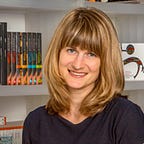The Nuremberg Trials and Simultaneous Interpreting
Simultaneous interpreting is now common practice, used regularly at conferences and other international gatherings. But many are surprised to hear that this mode of interpreting got its start at the Nuremberg Trials.
If you’re unfamiliar with the two commonly practiced modes of interpreting, here’s a quick definition:
Consecutive Interpreting
During a consecutive interpreting session, a speaker talks uninterrupted for up to a few minutes, then pauses to allow the spoken translation of their speech into another language. This mode of interpreting is typically used for business meetings, press conferences, and court proceedings, as well as in schools and hospitals, where medical interpreters are commonplace. The challenge for consecutive interpreters is remembering all the details as the speaker talks. They may take notes to help them accurately convey key points and technical information.
Simultaneous Interpreting
Simultaneous interpreting requires that the interpreter listen and provide spoken translation at the same time. The interpreter sits in a sound-proof booth, wears headphones to hear the speaker, and interprets what they’re hearing in real time, as its being said. Members of the audience wear headphones to hear the interpretation. Simultaneous conference interpreters must have advanced levels of education and experience so they can act quickly and interpret accurately, even with little time to consider phrasing. Due to the challenging nature of the work, simultaneous interpreters work in pairs so they can alternate regularly.
Nuremberg
Simultaneous interpreting got its start in 1945 when the Allied powers created the International Military Tribunal at the end of World War II. Judges from Great Britain, France, the Soviet Union, and the United States presided over the hearings of twenty-two Nazi criminals, responsible for the crimes committed during the Holocaust. The Tribunal was charged with holding “fair and expeditious trials,” making language and communication key. The success of the conference required the translation of all proceedings into the languages understood by the defendants and judges — English, Russian, French, and German.
Up until this point, consecutive interpreting had been the typical mode of interpreting, however the trials required a faster technique to help expedite the procedures. This was a challenge — transmitting multiple languages in real time — in an era where tapes and digital recording devices had not yet been invented.
French-born American scholar US Army Lieutenant Colonel Leon Dostert is credited with coming up with the solution. With the help of IBM, Dostert developed the microphones and headsets needed to clearly transmit the combination of languages. He then served as a mini-translation agency, hiring and training the interpreters on this new mode of interpretation. Dostert acted as Chief Interpreter and led three teams, so the spoken translation of the proceedings could be broadcast into multiple languages simultaneously. Each team worked together throughout the trials to ensure proceedings were translated accurately.
While the Nuremberg interpreters have not received much attention in the history books, the development of simultaneous interpreting certainly played a critical role in the Tribunal’s ability to carry out the trials in a fair and expeditious manner. The equipment has since evolved, and now it’s become commonplace to see speeches translated instantaneously into multiple languages at conferences or other international events, and other diplomatic proceedings. Today, simultaneous conference interpreters are used by the United Nations to provide spoken translation into the six official languages of the UN (Arabic, Chinese, English, French, Spanish, and Russian) as well as other languages as needed.
